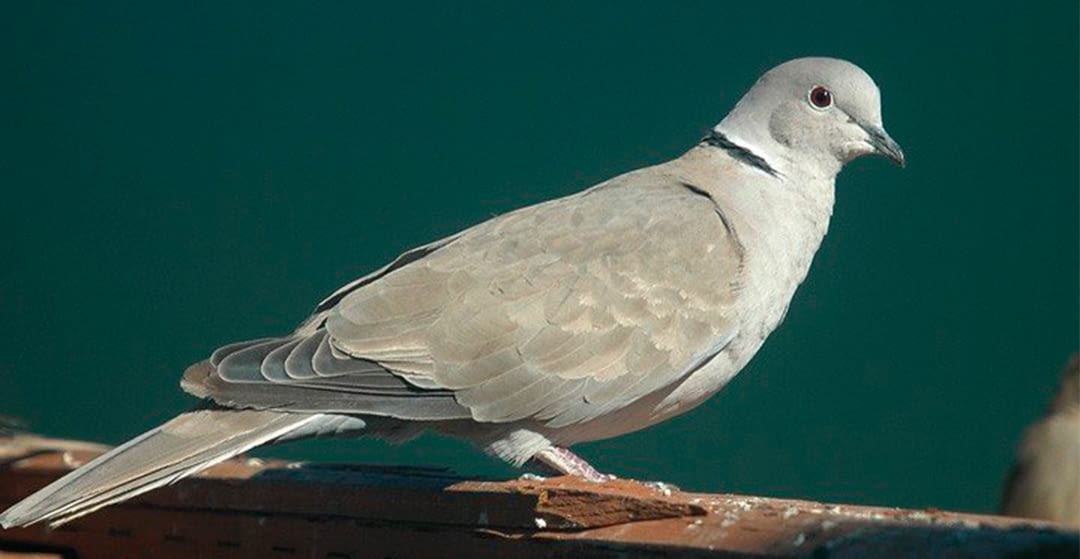
The turtledove, arguably one of the most widely distributed birds in the world, raises the question: can it be considered a domestic companion?
Although most species in this family are raised by keepers in order to preserve the species, there are several of them that are specifically intended for the domestic environment.
THE SPECIES
Turtle doves are birds belonging to the Columbidae family and some of the most common species kept as pets are diamond doves, zebra doves, Turkish doves or, like the one we are dealing with in this article and very widespread as a pet, the rosy-gray dove. .
It is known by the scientific name of streptopelia risoria, while its common name is the domestic gray-roofed dove or simply the domestic dove.
It is a bird that is widely spread throughout the world, and was already used as a domestic bird in ancient times, believed to be around 2,000 or 3,000 years ago.
ASPECT
The rosy-gray dove is physically very reminiscent of the Turkish dove, so it is a bit difficult to tell them apart. It is somewhat smaller, measuring around 30 cm, and also has a shorter tail.
Another difference with this bird is that its tail is shorter and the color of its feathers are paler. The color of the belly is whitish, which contrasts with the flight feathers and its tail has a darker tone. In flight it is easier to differentiate them due to the contrast in the color of their feathers. In addition, its song is multisyllabic, so it is another way to differentiate it from the Turkish pigeon.
It has a small wild relative that lives in the wild, from which it is not very different, except that it has not been bred in captivity. In addition, it is widely used by experts to achieve hybridization with other specimens of the same family.
HAVE THEM AS PETS
Let us remember the recent entry into force of the new Animal Welfare Law in Spain, already mentioned in other articles on our blog, and we must keep in mind that the Scientific and Technical Committee for the Protection and Rights of Animals is preparing the definitive list on which pets will be allowed and which are expected to be developed within a maximum period of between three and four years, consequently today it is possible to have these domestic doves as pets.
They are calm and social birds. They often form strong bonds with their cage mates or their owners if given the opportunity to socialize. They like company and it is not recommended to keep them alone for long periods.
Since ancient times, this bird has been highly valued as a companion. Those who have worked with it in captivity affirm that it can reach a longevity of up to 12 years, this will depend on factors such as the species, diet, environment and the care provided. She is known for her docility, which makes her susceptible to training to learn tricks or to get in and out of her cage with ease, although this behavior requires proper training.
At first, adjusting to their new home can take considerable time, and it is common for them to show nervousness about their surroundings. For this reason, it is essential to place the cage in a place with social activity so that the bird becomes accustomed to the family and its surroundings. Over time, it will gain trust with its owner. To prevent it from feeling intimidated or scared by the presence of people, it is recommended to place the cage at eye level and attach two of its walls to those of the house.
FEEDING
Their diet consists mainly of seeds and insects, such as corn, wheat or flax grains. The insects must be small invertebrates that must be left in the cage so that it can hunt them.
THE HABITAT
They need adequate space to fly and explore being large enough so that they can spread their wings and move comfortably.
The cage should not have too many objects, as this will limit the space in which the bird can fly. A few toys and three or four perches on which she can perch will be enough to sharpen her claws as well as keep herself entertained and stimulated.
It is important that the distance between the bars is not too great, or it could try to escape through them and get its head stuck, as happens to many parakeets and canaries. Also, these have to be made of stainless steel, so you can't break them with your pick.
REPRODUCTION
Its reproduction is not complicated, another reason why it is so appreciated as a captive bird, but since it will require a larger cage, not everyone can dedicate itself to its reproduction.
Additionally, the only way to differentiate a male from a female is through a DNA test. They need a large nest box, and after 20 days or so the chicks will have hatched, which will leave the nest when they are around 3 weeks old, at which time they will have to be moved to a different module.



